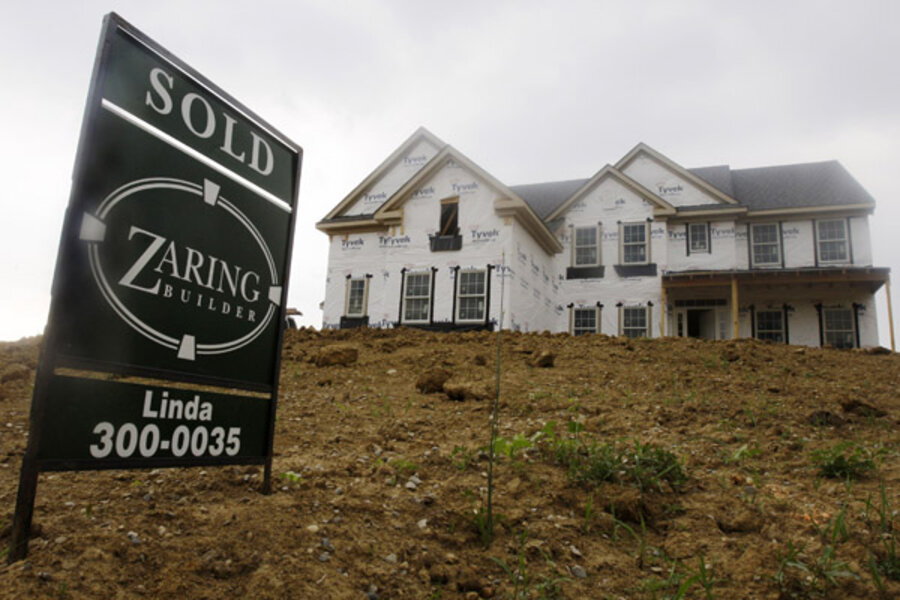Home construction plunges in May after government incentives end
Loading...
| Washington
Home construction plunged last month and building permits also fell, the latest signs that the construction industry won't fuel the economic recovery.
Builders are scaling back now that government incentives have expired. The biggest evidence of that trend: single-family homes fell 17 percent, the largest monthly drop since January 1991. The struggle in the housing industry is a concern for the broader economy because less homes mean fewer jobs across various sectors.
Overall new homes and apartments were down 10 percent in May to a seasonally adjusted annual rate of 593,000, the Commerce Department said Wednesday. April's figure was revised downward to 659,000.
IN PICTURES: Top 10 cities where home prices have improved most (or fallen least) in the past year
"The tax credit was never intended to be a permanent driver of housing activity and has simply shifted sales forward," wrote James Marple, senior U.S. economist with T.D. Bank. "Sales will almost certainly fall in the months ahead and take some steam out of housing recovery."
The sharp decline in housing comes despite more positive developments in the recovery.
Industrial production rose 1.2 percent in May, the Federal Reserve said Wednesday. Factories, the single biggest contributor to industrial activity, ratcheted up production 0.9 percent — the third straight monthly increase.
And inflation at the wholesale level appears to be tame. While wholesale prices did fall for a second straight month in May, that was the result of big declines in energy costs. The 0.3 percent dip in May was pulled down by a 7 percent drop in gasoline prices and a 7.4 percent fall in home heating oil prices. Core inflation, which excludes energy and food, rose 0.2 percent in May and is up just 1.3 percent over the past 12 months.
The continued absence of inflationary pressures means that the Federal Reserve, which meets next week, can keep interest rates low to provide support for the economic recovery.
The housing report also said applications for new building permits, a sign of future activity, sank 5.9 percent to an annual rate of 574,000. That was the lowest level in a year.
The rate of home building is still up about 41 percent from the bottom in April 2009, though it's down 70 percent from the last decade's peak in January 2006.
In a typical economic recovery, the construction sector provides much of the fuel. But that hasn't happened this time. Developers are trying to sell a glut of homes built during the boom years. And they must compete against foreclosed homes selling at deep discounts. As a result, new home sales made up about 7 percent of the housing market last year, down from about 15 percent before the bust.
Homebuilders are feeling less confident in the recovery now that government incentives for buyers have expired. The National Association of Home Builders said Tuesday its housing market index fell in June after two straight months of increases.
Builders had been more optimistic earlier in the year when buyers could take advantage of tax credits of up to $8,000. Those incentives expired on April 30, although buyers with signed contracts have until June 30 to complete their purchases.
Thanks to the tax credits, sales of new homes rose nearly 15 percent in April. That followed a nearly 30 percent surge in March, the biggest monthly increase in 47 years. But experts anticipate home sales will slow in the second half of this year. In addition, high unemployment and tight mortgage lending standards have kept buyers away.
Each new home built creates the equivalent of three jobs for a year and generates about $90,000 in taxes paid to local and federal authorities, according to the National Association of Home Builders. The impact is felt across multiple industries, from makers of faucets and dishwashers to lumber yards, but it has weakened in recent years.
Spending on residential construction and remodeling made up only about 2.4 percent of the nation's economic activity in the first quarter of the year. That's down from a peak of more than 6 percent during the housing market's boom years.
Related:
- Home sales silver lining: immigrants set to drive up demand
- Green building costs not always included in home appraisal
IN PICTURES: Top 10 cities where home prices have improved most (or fallen least) in the past year





